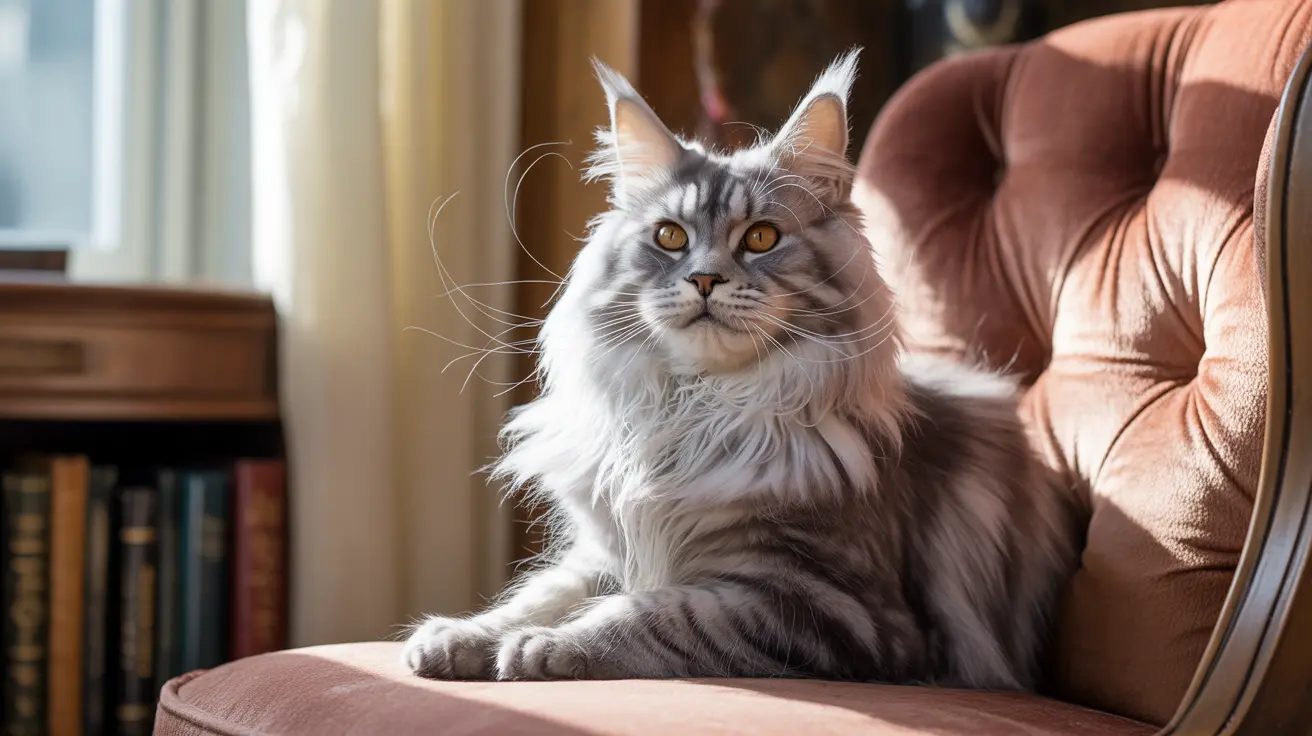Many cat owners have admired their feline friend's distinctive whiskers, but those prominent sensory hairs above their eyes deserve special attention. These specialized hairs, known as superciliary whiskers, play a crucial role in your cat's daily life and survival.
In this comprehensive guide, we'll explore everything you need to know about cat eyebrow whiskers, from their unique functions to their importance in feline health and behavior.
What Are Cat Eyebrow Whiskers?
Cat eyebrow whiskers, technically called superciliary whiskers, are specialized sensory organs located above each eye. Unlike regular fur, these whiskers are thick, deeply rooted, and packed with sensitive nerve endings that help cats navigate their environment.
Most cats have approximately three superciliary whiskers above each eye, though this number can vary between individuals and breeds. These whiskers are actually vibrissae – highly specialized sensory tools that cats use to understand and interact with their world.
The Vital Role of Eyebrow Whiskers
Sensory Navigation
Cat eyebrow whiskers serve as sophisticated environmental sensors. They can detect subtle changes in air currents, helping cats:
- Navigate in dark spaces
- Determine if they can fit through tight spaces
- Detect approaching objects or potential threats
- Monitor their immediate surroundings
Protection Mechanism
These specialized whiskers act as a crucial defense system for your cat's eyes. When something approaches too closely, the whiskers trigger an automatic blinking reflex, helping to protect the eyes from potential damage or debris.
Breed Variations and Characteristics
While most cats have eyebrow whiskers, their appearance can vary significantly between breeds:
- Maine Coons and Norwegian Forest Cats typically have prominent, thick eyebrow whiskers
- Persian cats often display notably bushy whiskers
- Sphynx cats may have minimal or no eyebrow whiskers
- Devon Rex cats tend to have shorter, curled whiskers
Care and Maintenance
Proper care of your cat's eyebrow whiskers is essential for their well-being. Never trim or pluck these important sensory tools, as doing so can disorient your cat and cause stress. If you notice unusual whisker loss or damage, consult your veterinarian.
Frequently Asked Questions
What are cat eyebrow whiskers and why are they important for my cat's senses?
Cat eyebrow whiskers are specialized sensory organs that help cats detect air movements, judge distances, and navigate their environment. They're crucial for spatial awareness and environmental perception, especially in low-light conditions.
Do all cat breeds have eyebrow whiskers, and why do some cats have bushier ones?
While most cats have eyebrow whiskers, their appearance varies by breed. Long-haired breeds like Maine Coons typically have bushier whiskers, while hairless breeds like the Sphynx may have very few or none. This variation is primarily genetic.
How do cat eyebrow whiskers help protect my cat's eyes?
Eyebrow whiskers trigger an automatic blinking reflex when they detect objects approaching the eyes, helping protect them from potential injury or debris. They act as an early warning system for your cat's sensitive eyes.
Can damage or loss of eyebrow whiskers affect my cat's behavior or health?
Yes, damage or loss of eyebrow whiskers can impact a cat's spatial awareness and ability to navigate safely. Cats may become disoriented or less confident in their movements if their whiskers are damaged or missing.
Is it safe to trim or cut my cat's eyebrow whiskers?
No, it's never safe to trim or cut your cat's eyebrow whiskers. These are essential sensory tools that your cat needs for navigation and protection. Cutting them can cause stress, disorientation, and potentially dangerous situations for your cat.
Conclusion
Cat eyebrow whiskers are remarkable sensory tools that play a vital role in feline navigation, protection, and environmental awareness. Understanding their importance helps cat owners better appreciate these specialized features and ensure proper care for their feline companions.
Remember that these whiskers are essential to your cat's well-being, so always protect them and watch for any unusual changes that might require veterinary attention.






